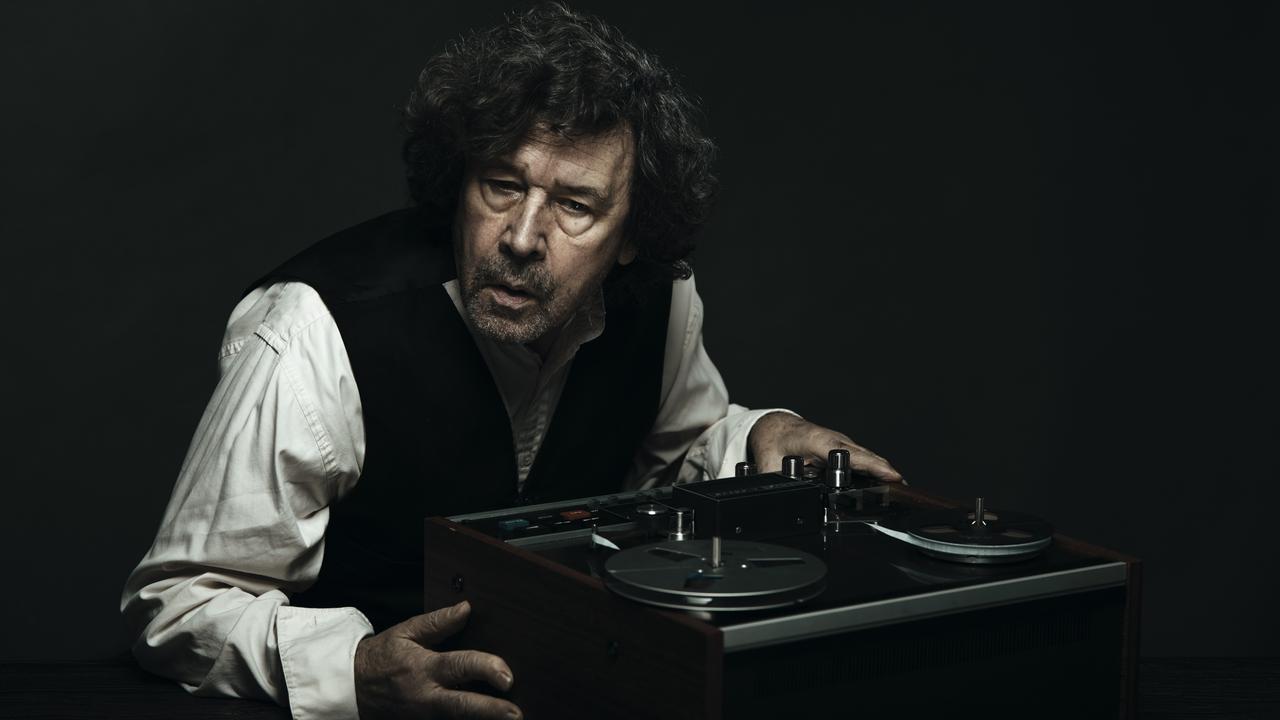Reviews: DZ Deathrays; Timberlake; Ferdinand; Hillbilly Goats; Ryhe
DZ Deathrays finds expansive sound and melodic sensibility.
ROCK
Bloody Lovely
DZ Deathrays
I Oh You
4 stars
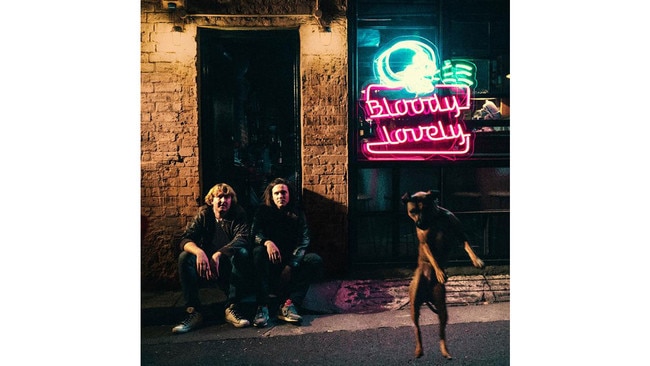
Since its earliest performances at house parties, Brisbane duo DZ Deathrays has unashamedly worshipped at the altar of the riff. After an adolescence spent in thrall to noisy punk rock, Shane Parsons (guitar/vocals) and Simon Ridley (drums/programming) joined forces in 2008 with the express intention of inducing headbanging. Since then, the pair has demonstrated an aptitude for writing tight, catchy songs on its two previous albums, which both won ARIA awards in the hard rock category.
Bloody Lovely finds Parsons and Ridley striving for more than just strained neck muscles, however. The emphasis here is on a more expansive sound that wholeheartedly adopts a melodic sensibility, rather than the past approach of simply shrugging at it.
This is the most surprising aspect of their third album, and it’s best heard on penultimate track Afterglow, which is the duo’s creative high-water mark. Here, Parsons and Ridley achieve a key-in-lock feel with their individual musicianship that blooms into a monumental chorus powered by an irresistible groove.
Afterglow exhibits an energy and dynamism unlike anything else DZ Deathrays has recorded to date. What the band has achieved with Bloody Lovely is subtle but impressive.
While its previous releases have felt limited by the sum of its individual parts, here the duo has somehow managed to break those bonds. Now the possibilities of writing music built on the simple foundation of guitar, drums and vocals seem somehow boundless. It’s quite a breakthrough for Parsons and Ridley, and it’s a credit to the work they’ve put into their songwriting. The duo is careful to keep one foot in its origins — as exemplified in the minute-long thrash-rock of Bad Influence, which also happens to be the album’s one forgettable composition — but those moments seem to be included here as more of a passing nod to the past than a portent.
DZ Deathrays still make a hell of a rock 'n' roll racket, but the guitarist and drummer appear to have learned the value of prioritising melody over constantly bowing down to the riff. The closing minute of final track Witchcraft Pt. II introduces a tantalising, gorgeous instrumental idea that may well make an unedited appearance on their next release — or so one hopes. The four years between albums is another sign of maturity, though a crowded touring schedule was undoubtedly a factor. Still, it was evidently time well spent.
On this page in 2014, while reviewing second album Black Rat, I noted that it sounded like a confident band torn between its party-friendly beginnings and a new-found ability to embrace beauty amid the sonic destruction. I wondered then whether album No 3 would be the group’s first classic release, and so it has proven to be.
Andrew McMillen
***
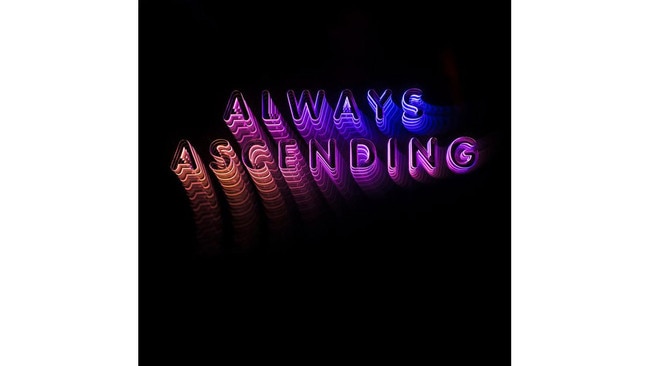
INDIE ROCK
Always Ascending
Franz Ferdinand
Domino Records
3 stars
This Scottish group was at the forefront of the mid-2000s indie rock scene, but more than a decade after producing timeless anthems such as Take Me Out, the quintet has stepped back from infectious guitar hooks in search of a retro sound.
Such artistic evolution is necessary for a popular band that is seeking to avoid alienating its fans, but is also unable to continue pretending it’s still 2004. On its fifth record, Franz Ferdinand has embraced a new direction, perhaps spurred on by the departure of lead guitarist Nick McCarthy in 2016.
Here, the band offers uniformly tight performances throughout, but Always Ascending could have benefited from reining in the more avant-garde elements of its experimental foray into disco fusion.
The title track and album opener begins with a drawn-out piano and vocal intro, before transitioning into a synth-heavy beat that initially struggles to connect. Likewise, the jarring arrangement of Finally suffers from execution issues, but these stumbles are balanced by highlights such as the 70s-inspired Lois Lane and the similarly dated, Bowie-esque Paper Cages. Both feature masterstrokes of electric guitar and synth-driven melodies delivered by frontman Alex Kapranos.
Despite its clear efforts to move away from indie rock, the trademark Franz Ferdinand sound is never far from the surface. Feel the Love Go veers closer than most to the group’s earlier dancefloor fillers, and perfectly marries a traditional rock foundation with the addition of a brilliant saxophone solo.
This carefully calculated reboot, while peppered with missteps, is not without its triumphs.
Clare Armstrong
***
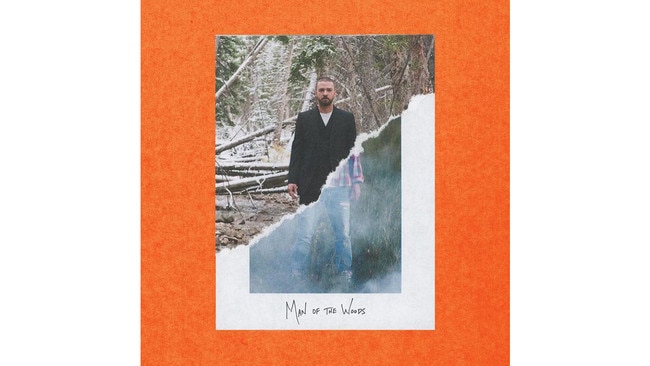
POP
Man of the Woods
Justin Timberlake
Sony
3.5 stars
The new millennium’s ultimate multi-tasker, Justin Timberlake — film star, entrepreneur and Trolls soundtrack producer — wants his king-of-pop day job back.
On fifth solo album Man of the Woods, Timberlake has called on collaborators from past projects and teamed with a few new faces in country star Chris Stapleton and modern-day soul queen Alicia Keys.
As the title suggests, JT is taking us on a journey into his own brand of roots music. It’s flannelette and beards meets an 808 drum sound. Third single Say Something features Stapleton on vocals, and the pair co-wrote three tunes for the record. The beats of his 2006 album FutureSex/LoveSounds are still there, but Timberlake tips his hat to his Tennessee upbringing.
That southern American heart is proudly worn on his sleeve, and he’s happy to proclaim that others “act like the south ain’t the shit!” Timberlake excels when he’s riding a groove, such as in the Pharrell Williams co-write Midnight Summer Jam, which promises everything the title suggests.
Elsewhere, there are missteps: while the found audio on Sauce works, spoken-word passages from his wife Jessica Biel and others are hit and miss. Some of his lyrics are cringe-worthy, while the sentimental Flannel, which features Biel, is plain mawkish. Just as you’re scratching your head and wondering about the merits of the left turns, the album will revert to a strong groove like the one heard in Montana, or you’ll marvel at the blues licks that lift Higher Higher. Timberlake calls this his most personal record to date.
Power to him for pushing his boundaries, but there’s a lack of cohesion, and the result is a mixed bag.
Sean Sennett
***
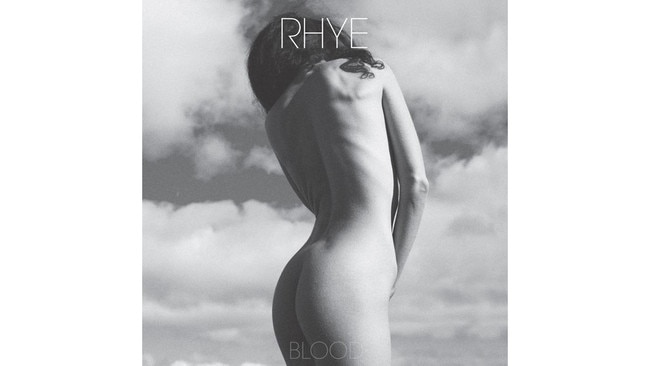
POP/SOUL
Blood
Rhye
Caroline/Loma Vista
3.5 stars
Rhye incited something of a quiet riot among music lovers with its stunning singles Open and The Fall back in 2013. Marrying the unique contralto of Canadian vocalist Mike Milosh with Robin Hannibal’s delicate, piano-driven production, its sound felt instantly timeless and was duly embraced by tastemakers and pop lovers alike. Across its debut, the pair combined the warm minimalism of electronic artists such as Air with a sensual, Sade-like breathiness. It was an effective aesthetic, which may explain why Rhye’s follow-up has taken five years. But it could also be the departure of Hannibal, who seemingly never enjoyed the idea of the outfit existing beyond online collaboration.
With Milosh now firmly in the driver’s seat, Blood focuses on developing Rhye’s repertoire for a growing live audience. This is an unabashedly romantic project, and the strengths of this record are largely what made the first a success: gorgeous, swooning instrumentation topped with aching melodies from Milosh.
What’s changed is the urgency, with songs such as Taste and Feel Your Weight pushing up the tempo considerably, thanks to crisp hi-hats and pulsing bass.
For an outfit predicated on slowness, Blood sees Rhye deliberately nudging the accelerator to a groove that is almost danceable. The sound is more organic, wrapping itself seductively around its singer rather than merely accompanying it. The unfortunate by-product is that some ballads now feel like they lag, especially towards the back end of the album.
That’s rectified by the stunning closer, Sinful, which marries guitars and strings in an entrancing number worthy of recent collaborator Bonobo. It seems that even expert practitioners of bedroom sounds can appreciate a little versatility.
Jonathan Seidler
****
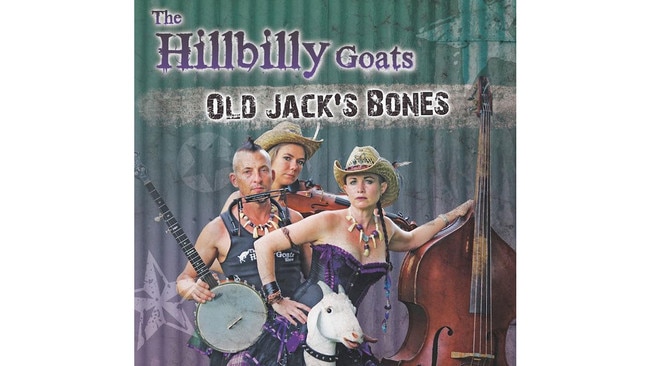
AMERICAN FOLK
Old Jack’s Bones
The Hillbilly Goats
MGM
3.5 stars
Purists will doubtless shake their heads at the thought of an Australian band performing old-time American hillbilly standards in feigned Appalachian accents, and there’s no disputing the incongruity at play in Old Jack’s Bones.
But the sheer exuberance of southeast Queensland-based, far north Queensland-raised Hillbilly Goats — plus the panache and proficiency of the ensemble playing and singing — ultimately parries all attempts at resistance.
Launched at the recent Tamworth country music shindig, the group’s fourth studio album overflows with the knees-up inducing music that its followers have come to expect.
From tight thigh-slapping opening renditions of those hoary old hootenanny chestnuts Crow Black Chicke n and Whoa Mule, to the animated closing takes on Americana folk classic Darlin’ Corey and Kentucky bluegrass humdinger Virginia Darlin’ — the latter replete with successive harmonica, mandolin, double bass, dobro, fiddle, guitar and bones solos — this set is guaranteed to ignite any bootscooter gathering.
Barnyard fauna imitations emphasise the bucolic nature of the Goats’ gambolling fare. Inevitable fowl noises surface in Cluck Old Hen, betwixt duelling banjo and fiddle, and the odd yodel.
Tasteful fiddle fills punctuate Pretty Polly as married band leaders Bryce and Mahney Wearne harmonise on a souped-up version of the murder ballad. The furious pace abates for blues evergreen Where Did You Sleep Last Night ?, but only for the opening minute, and Hell Broke Loose in Georgia explodes after an a cappella intro. The atmospheric title track — which pays homage to the Cape York ringer who taught “Goat Girl” Mahney to play bones — has the virtue of being an original song conveying an Aussie narrative.
Tony Hillier


